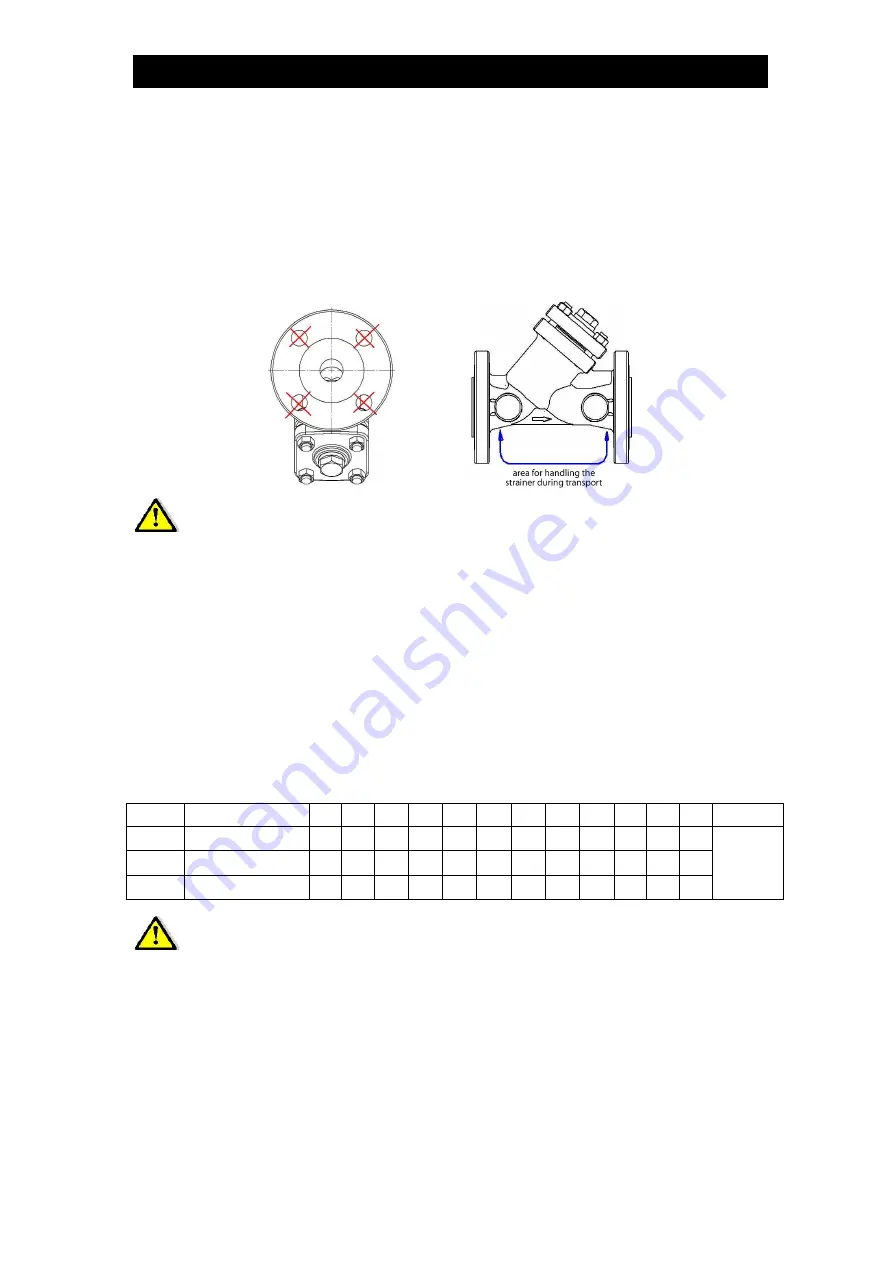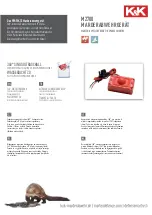
4
3. Transport and Storage
Transport and storage should be carried out at temperatures between -20 and 65
°
C.
Strainers should be protected against the influence of external forces and destruction of
the paint layer as well. The aim of the paint layer is to protect the strainers against rust
during transport and storage. Strainers should be kept in clean, dry rooms and protected
against the influence of atmospheric conditions. A drying agent or heating should be
applied in damp rooms to prevent condensate formation. Strainer weights are indicated
on the relevant specification data sheet (SDS).
Do not fit lifting devices to connecting holes.
4. Function
Strainers are designed to remove solid particles from the medium flowing through them.
Their task is to protect the most sensitive plant components such as pumps, control
valves, flow and heat meters from debris. The strainer will remove solid particles which
are larger than the size of the holes in the screen mesh. In order to remove magnetic
debris from the medium it is recommended to use a magnetic cartridge located in the
centre of the filter screen. The type of working medium may make some materials
unsuitable for use. Strainers are designed for normal working conditions.
Working pressure should be adapted to the maximum temperature of the medium
according to the table below:
Model Material PN
-20
-10
50
100 120 150 200 250 300
350
400
Temp.
(
°
C)
Y8F-16
EN-GJL-250
16 --- 16 16 16 16 14.4 12.8 11.2 9.6 --- ---
Y8F-25
EN-GJS-400-18-LT 25 --- 25 25 25 25 24.3 23 21.8 20 17.5 ---
Y8F-40 GP240GH
40 30 40 40 37.1 36.3 35.2 33.3 30.4 26.7 25.7 23.8
Maximum
Operating
Pressure
(barg)
The plant designer is responsible for selecting a strainer that is suitable for working
conditions.
5. Application
・
Steam, water, air and other fluids*
(*Do not use for toxic, flammable or otherwise hazardous fluids.)
・
Industrial technologies, power industry, heat industry, HVAC plants, etc.
TEG-Y8F-M-00 20 August 2013


























